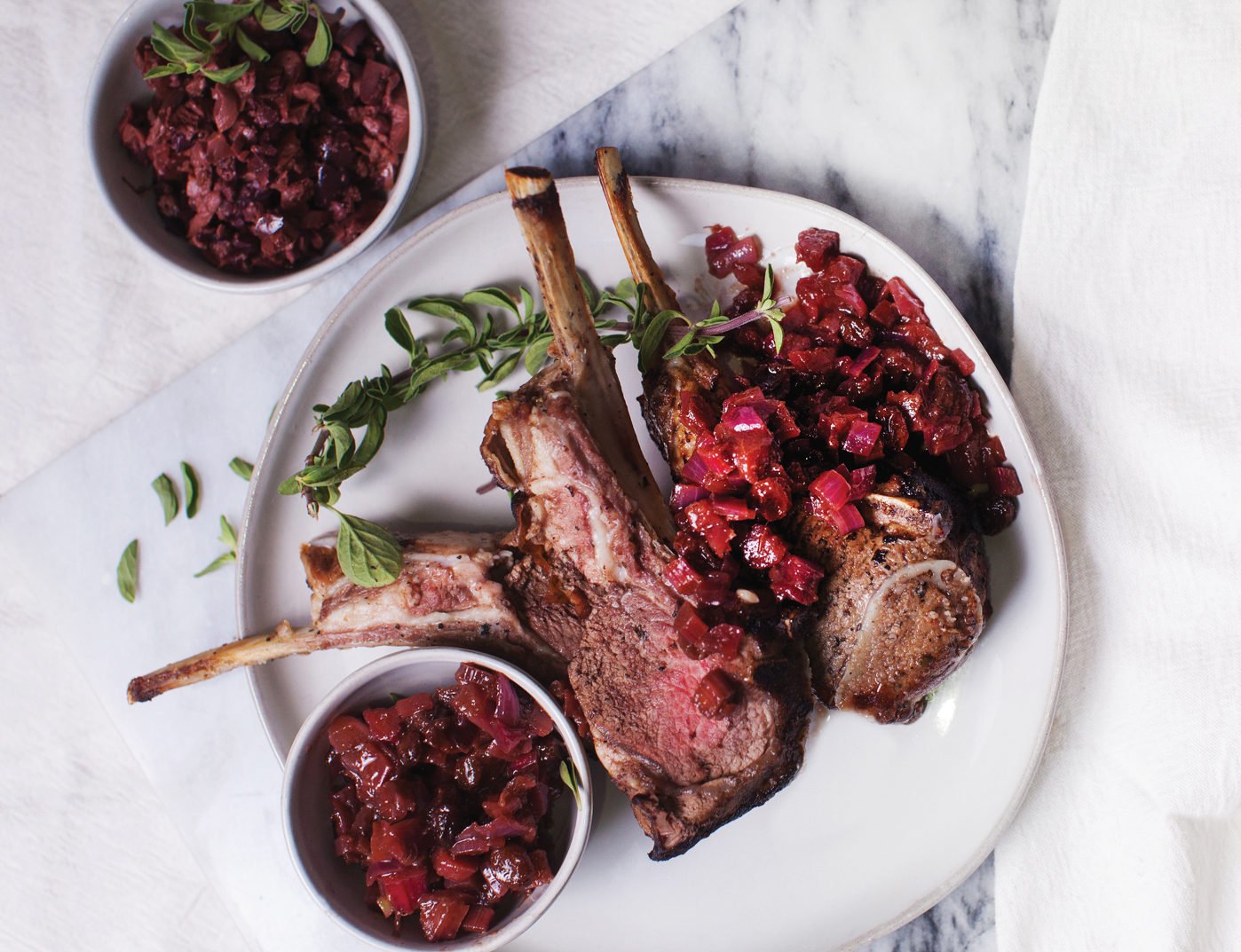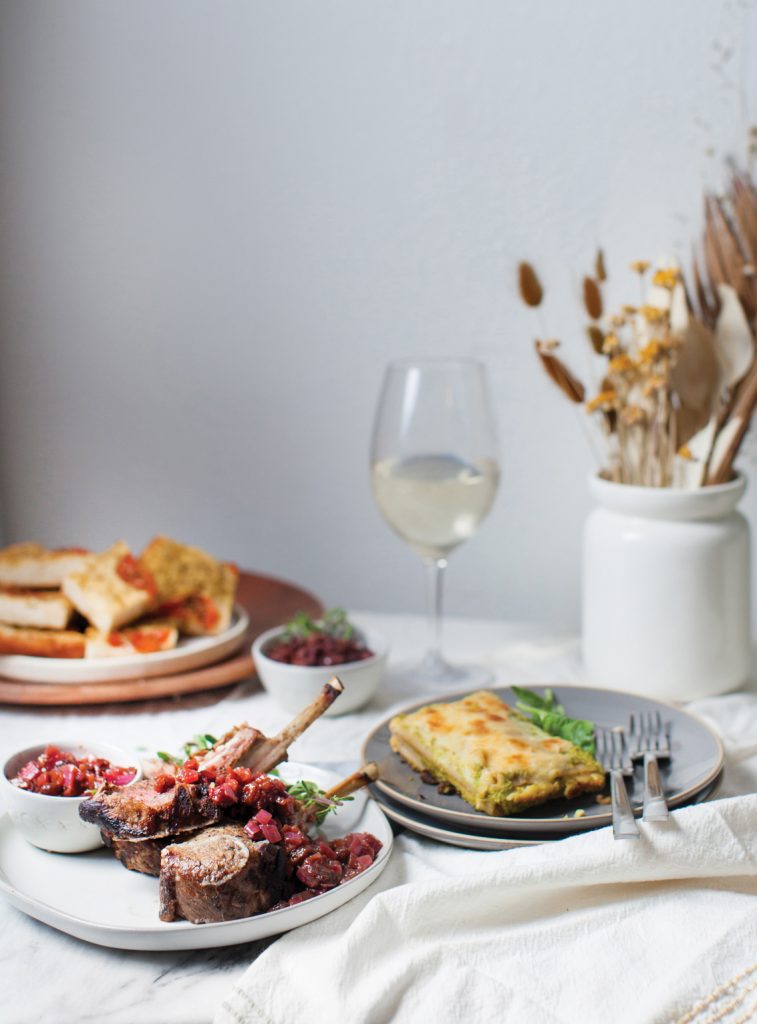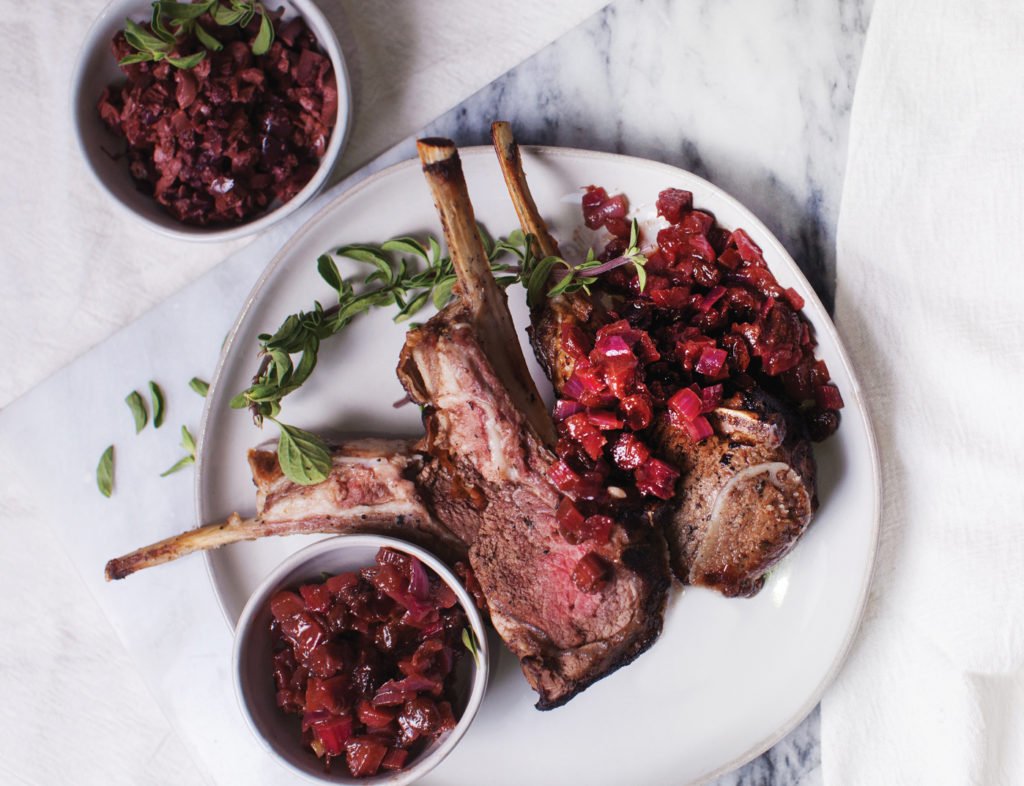
Recipes from Home To Table
The concept of home resonates so personally with all of us. “Home” might be the house we grew up in with the bedroom we sat in, endlessly listening to music on repeat. Maybe it is the hometown we rode our bikes around in, with the monkey bars we’ve fallen off of too many times to count. Or it is less about the place and rather about the people — family or friends who center us and give us a sense of solace that is familiar and warm, and no matter where we pick up and move to, we are home in their presence.

Home is where our people are, and where the food we love is. I love how one bite of a dish can suddenly bring a flood of comforting memories. Home is the kind of food that keeps us going for seconds and thirds.
Focaccia bread is this for me. It was the first bread recipe that I made, and it was unlike any bread I had ever eaten. This focaccia is light and chewy, and nicely paired here with roasted tomatoes and an olive spread. It’s a versatile snack for cocktail hour or a lunch with a green salad. And while I love sharing recipes and secrets, this is the one recipe I have been asked about time and time again, and I have kept my lips sealed about … until now.
Cast Iron Focaccia with Roasted Tomato and Olive Spread (serves 8)
INGREDIENTS
3 cups bread flour
1 tablespoon salt, plus more for seasoning
½ teaspoon dry yeast
2 cups warm water
½ cup extra virgin olive oil, divided
Non-stick cooking spray
1 large tomato, sliced
Herbes de Provence with lavender
1 9.5-ounce jar pitted Kalamata olives
¼ cup shredded Parmesan cheese
PREPARATION
Step 1
Start the dough the night before so it can rise for 12–15 hours. To begin, add to large bowl bread flour, 1 tablespoon salt and dry yeast. Mix well. Slowly add warm water to the dry mix, making sure it is incorporated and all the flour is wet.
Step 2
Pour ¼ cup extra virgin olive oil into a lidded container, 4 liters or larger. Move the container around so the olive oil coats the sides and bottom; this helps the dough rise. Pour dough into the container and seal with the lid. Let sit and rise overnight at room temperature.
Step 3
About 12–15 hours later you will see that the dough has doubled in size. Spray a 10-inch cast iron pan with non-stick cooking spray. (I have tried olive oil spray, butter, oil … trust me, the non-stick cooking spray will turn out the best dough.) Pour the dough into the pan and let sit and rise again in the pan for 1 hour.
Step 4
When closing in on the 1 hour of rising, preheat oven to 400 degrees F. Place tomato slices in a circle on dough and season with salt and Herbs de Provence with lavender (you can typically find this at a local grocery store). Bake for 40 minutes, and then raise heat to 450 degrees F and bake for an additional 8 minutes.
Step 5
While dough is baking, make olive spread. (This is almost too easy to make, and totally a crowd pleaser.) Place olives and Parmesan cheese in a food processor and pulse until chunky. Slowly add the remaining ¼ cup extra virgin olive oil until the olive mixture is smooth. Let the focaccia cool before removing from the cast iron. Slice and enjoy with olive spread.
* * *
A casserole is one of those classics that reminds me of time at home — pulling the dish out of the oven and watching the steam rise, or going to the fridge late in the evening for leftovers because it gets even better as it sits. It is also a convenient dish to assemble ahead of time and put in the oven right before feeding family and friends, without losing time cooking, squirreled away in the kitchen, isolated from everyone else. And while casseroles can sometimes seem boring, I push this one out of the box, making sure it is fresh, zesty and green. I create my recipes by listing produce that are in season and then brainstorming how they can be used. Incorporating seasonality into this casserole is no exception; spring peas and fresh lemon rule this dish. I also include a recipe for ricotta with lemon zest that is easier than you think — yes, you will make your own cheese!
Spring Pea and Fresh Lemon Ricotta Manicotti (serves 6)
INGREDIENTS
Ricotta cheese (recipe below)
4 tablespoons butter
1 large yellow onion, sliced
1 pound fresh peas (frozen will work, but it’s pea season!)
1½ cups milk
1½ teaspoons salt
2 eggs
1 cup shredded mozzarella cheese
½ cup shredded Parmesan cheese, plus extra for top
12 pieces of manicotti shells
Bunch of fresh basil, minced, for garnish
For the ricotta cheese: (can be made up to 4 days before)
4 cups whole milk
4 tablespoons lemon juice
½ teaspoon salt
Cheese cloth
Zest of 1 lemon, plus more for garnish
PREPARATION
Step 1
Make ricotta cheese: Using a large saucepan on medium heat, stir in milk and continue heating until simmering. Turn off heat, add lemon juice and salt, then stir once. Let sit for 5 minutes until curds start to separate. Set up a strainer in sink and line with a cheese cloth (if you don’t have a cheese cloth, use anything made of cotton fabric, like a kitchen towel or even a pillow case). Pour the mixture over the cheese cloth and let sit for 10 minutes.
Step 2
In large saucepan on medium high heat, add butter and sliced onions. Occasionally mix for 5 minutes until the butter turns toasted brown. Stir in peas, milk and salt. Bring to a boil. Once it reaches a boil, use a mixer or immersion blender and blend until smooth. Set aside.
Step 3
Add the ricotta cheese to a large mixing bowl and stir in lemon zest. (You could stop here and have an awesome cheese to use on crostini, but we aren’t stopping here!) Add eggs, mozzarella and Parmesan cheese, setting some Parmesan aside for the top. Mix well. If the cheese mixture is too thick, add some milk to loosen it up.
Step 4
Cook manicotti al dente in salted water according to package. Drain. Preheat oven to 375 degrees F. Spoon spring pea sauce on the bottom of a large casserole dish, just to coat. Stuff the manicotti with the cheese mixture and line them across the casserole dish. Top with more pea sauce, cover with foil and bake for 30 minutes. Uncover dish, top with leftover Parmesan cheese and bake an additional 10 minutes until bubbly. Garnish with minced basil, remaining lemon zest and a little more shaved Parmesan.
* * *
Rhubarb is an ingredient I like to utilize in spring, contrasting its tartness with lamb, the meat that my family always has on Easter. Because I specialize in food and wine pairings, I have a never-ending supply of leftover wine or beer available to incorporate into my dishes. In developing this dish I used a dry white wine and experimented with making a chutney with rhubarb. It was excellent but needed a kick, so I added a step and created a white wine spiced rhubarb chutney to accompany the lamb and asparagus.

Marinated Lamb Chops and Asparagus with White Wine Spicy Rhubarb Chutney (serves 6)
INGREDIENTS
For the chutney:
1 cup rhubarb, peeled and sliced
½ red onion, diced
1/3 cup raisins
1 tablespoon stone ground mustard
½ cup dry white wine
¼ cup Champagne vinegar
½ teaspoon salt
½ teaspoon pepper
2 cloves garlic, minced
¼ teaspoon cayenne pepper
¼ teaspoon cinnamon
½ cup light brown sugar
For the lamb:
1 Frenched lamb rack (8–9 single ribs)
1/3 cup plus 2 tablespoons extra virgin olive oil
4 cloves garlic, minced
1 orange, juiced
2 tablespoons dried oregano
½ teaspoon salt, plus extra for seasoning
½ teaspoon pepper
8 asparagus stalks, 2 inches of bottom removed and sliced at an angle
3 tablespoons capers
1 green onion, sliced at an angle (utilizing white and green parts)
Fresh oregano for garnish
1 orange for garnish, sliced
PREPARATION
Step 1
Make chutney: In a saucepan bring all ingredients except sugar to a boil. Once the mixture is boiling, add the sugar slowly while stirring. Reduce heat and let simmer for 2 hours uncovered until mixture becomes thick. While simmering, start the lamb marinade.
Step 2
Pat lamb dry and slice into individual ribs, removing some fat if necessary.
Step 3
In medium mixing bowl place 1/3 cup olive oil, garlic, orange juice, dried oregano, salt and pepper. Mix to make a marinade. Add the lamb to the marinade, and massage each individual rib with it. Cover and let sit in the refrigerator for 1–2 hours.
Step 4
Remove chutney from simmer. Place chutney in a jar and let sit at room temperature until ready to use. Heat a large skillet to medium high. When the pan is hot, add 2 tablespoons of olive oil and carefully place lamb in the skillet, making sure not to overcrowd. (If the pan is not big enough, I recommend doing in batches.) Let sear 3–4 minutes. Flip the lamb and add sliced asparagus, capers and sliced green onions. Let the lamb sear for another 3–4 minutes. Remove lamb and let sit for 10 minutes. Keep the skillet on medium high to finish cooking the vegetables. Add a pinch of salt to the asparagus, and cook for an additional 2–3 minutes.
Step 5
Begin plating by placing the lamb back in the skillet and serving family style. Garnish with fresh oregano and slices of orange. Add a side of white wine spicy rhubarb chutney.

